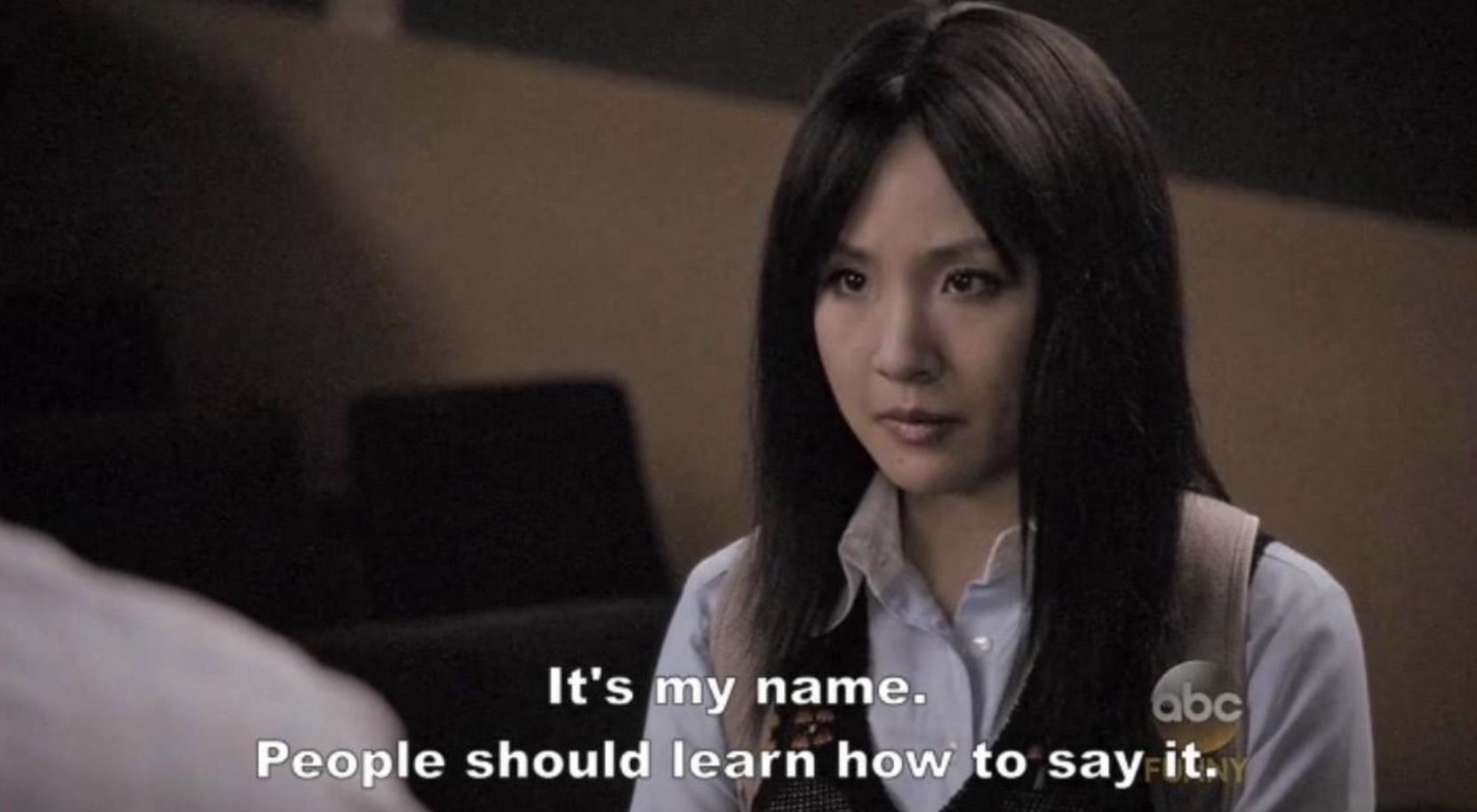Hi there! Today, I’m back with another post on Korean self introduction. This time, we will be upgrading to a higher lever and learning some intermediate Korean self introduction.
Previously, we have learnt several short sentences to help beginners with their basic self introduction. These short sentences are easy to learn, but they limit those with a better knowledge of Korean from going deeper into the conversation.

I will teach you ways to express yourself better so that your self introduction will be more complete and natural for your next language exchange interaction. (You might also want to avoid these common language exchange mistakes)
Before we begin, here is a compilation of the words or sentences that you will come across throughout this post:
| Audio | English | Pronunciation | Speech Level |
|---|---|---|---|
| My name is Jay. | je ireumeun jeiyeyo. | polite | |
| I am called Jay. | jeoneun jeirago haeyo. | polite | |
| I am called Jay. | jeoneun jeirago hapnida. | formal | |
| My name is Jaeyun but (you) can call me Jay. | je ireumeun jaeyunijiman jeirago bulreodo dwaeyo. | polite | |
| My name is Jaeyun but (you) can call me Jay. | je ireumeun jaeyunijiman jeirago bulreodo doepnida. | formal | |
| I am Jay. I am an American. | jeoneun jeiyeyo. jeoneun miguk saramieyo. | polite | |
| I am Jay. (I am) an American. | jeoneun jeiyeyo. miguk saramieyo. | polite | |
| I am Jay. And (I am) an American. | jeoneun jeiyeyo. miguk saramigoyo. | polite | |
| I like dramas. | jeoneun deuramareul joahaeyo. | polite | |
| I like dramas and Kpop. | jeoneun deuramahago keipabeul joahaeyo. | polite | |
| I like dramas and Kpop. | jeoneun deuramarang keipabeul joahaeyo. | polite | |
| I go to Korea University. My major is Mathematics. | jeoneun goryeodaehakgyoe danyeoyo. je jeongongeun suhakgwayeyo. | polite | |
| I go to Korea University and my major is Mathematics. | jeoneun goryeodaehakgyoe danigo je jeongongeun suhakgwayeyo. | polite | |
| I play Overwatch. | jeoneun obeowochireul haeyo. | polite | |
| I play Overwatch often. | jeoneun obeowochireul jaju haeyo. | polite | |
| I play Overwatch often. | jeoneun jaju obeowochireul haeyo. | polite | |
| always | hangsang | Frequency Adverb | |
| usually | botong | Frequency Adverb | |
| often | jaju | Frequency Adverb | |
| sometimes | gakkeum | Frequency Adverb | |
| almost do not (i.e. rarely) | geoui an | Frequency Adverb | |
| completely do not (i.e. never) | jeonhyeo an | Frequency Adverb | |
| I “almost do not” play Overwatch. i.e. I rarely play Overwatch. | jeoneun obeowochireul geoui an haeyo. | polite | |
| I am learning Korean language. | jeoneun hangugeoreul baeugo isseoyo. | polite | |
| 1 | il | Sino-Korean Number | |
| 2 | i | Sino-Korean Number | |
| 3 | sam | Sino-Korean Number | |
| 4 | sa | Sino-Korean Number | |
| 5 | o | Sino-Korean Number | |
| 6 | yuk | Sino-Korean Number | |
| 7 | chil | Sino-Korean Number | |
| 8 | pal | Sino-Korean Number | |
| 9 | gu | Sino-Korean Number | |
| 10 | sip | Sino-Korean Number | |
| 11 | sibil | Sino-Korean Number | |
| 12 | sibi | Sino-Korean Number | |
| 13 | sipsam | Sino-Korean Number | |
| 14 | sipsa | Sino-Korean Number | |
| 15 | sibo | Sino-Korean Number | |
| 16 | sibyuk | Sino-Korean Number | |
| 17 | sipchil | Sino-Korean Number | |
| 18 | sippal | Sino-Korean Number | |
| 19 | sipgu | Sino-Korean Number | |
| 20 | isip | Sino-Korean Number | |
| 30 | samsip | Sino-Korean Number | |
| 40 | sasip | Sino-Korean Number | |
| 50 | osip | Sino-Korean Number | |
| 60 | yuksip | Sino-Korean Number | |
| 70 | chilsip | Sino-Korean Number | |
| 80 | palsip | Sino-Korean Number | |
| 90 | gusip | Sino-Korean Number | |
| 100 | baek | Sino-Korean Number | |
| weeks | ju | noun | |
| month | gaewol | noun | |
| years | nyeon | noun | |
| two years | i nyeon | duration | |
| for | dongan | Duration Particle | |
| I have been learning Korean for two years. | jeoneun i nyeon dongan hangugeoreul baeugo isseoyo. | polite | |
| I have been learning Korean for two years. | jeoneun i nyeon dongan hangugeoreul baeugo itseupnida. | formal | |
| My MBTI is INFJ. | je MBTIneun INFJyeyo. | polite | |
| My MBTI is INFJ. | je MBTIneun INFJipnida. | formal |
Introduce your name with -라고 해요 (rago haeyo)

In the previous self introduction post, we learned how to greet in Korean and introduce our actual names in Korean. In this section, I will teach you how to introduce your preferred name in Korean.
Do you still remember how to introduce your name in Korean?
제 이름은 제이예요.
(je ireumeun jeieyo)
My name is Jay. (polite)
It’s much easier to introduce your preferred name as your name directly. If you just want to introduce your preferred name, you can say,
저는 제이라고 해요.
(joneun jeirago haeyo)
I am called Jay. (polite)
or
저는 제이라고 합니다.
(joneun jeirago hamnida)
I am called Jay. (formal)
저 (jo) means “I” and the 라고 해요 (rago haeyo) ending loosely means “called.” This way of introducing yourself may sound awkward to many English speakers but it’s actually very common in Korea.
You can replace the word 제이 (jei) with your own preferred name and it will work just as well.
Just remember to add an 이 behind if your name ends with a consonant e.g. 재윤 (jaeyun) becomes 재윤이 (jaeyuni)
Based on personal experience, some foreign names may be difficult for Koreans to remember, so some people may want to simplify their names by using preferred names. I had my name simplified to 제이 (jei), by the way.

In case you want to introduce your real name alongside your preferred name, you can say,
제 이름은 재윤이지만 제이라고 불러도 돼요.
(je ireumeun jaeyunijiman jeirago bulrodo dwaeyo)
My name is Jaeyun but (you) can call me Jay. (polite)
or
제 이름은 재윤이지만 제이라고 불러도 됩니다.
(je ireumeun jaeyunijiman jeirago bulrodo dwemnida)
My name is Jaeyun but (you) can call me Jay. (formal)
In case you don’t recognise some vocabulary words found above,
지만 (jiman) - but
불러 (bulro) - to call
-도 돼요 (do dwaeyo) - “It’s fine if…” sentence ending
Notice that the topic “you” was omitted from the sentence above. Many times, the topic of a sentence can be inferred easily based on context. In such situations, excluding the topic from your sentence is completely fine.
Omitting the topic

It’s inevitable to talk about yourself during self introductions, which means you will probably say the word “I” a lot. If you were to say “I” for every single sentence in Korean, it may sound very robotic.
저는 제이예요. (joneun jeieyo)
저는 미국 사람이에요. (joneun miguk saramieyo)
I am Jay.
I am an American.
Both sentences are specific since they mention 저는 (joneun) or “I” as the topic and that’s fine. But if you want to sound more natural, you can omit the second 저는 (joneun) and say,
저는 제이예요. (joneun jeieyo)
미국 사람이에요. (miguk saramieyo)
I am Jay.
(I am) an American.
In fact, if you are going to continue talking about yourself for subsequent sentences, feel free to omit 저는 (joneun) until you decide you want to talk about something else.
Just a fun little example to help you understand better. Credits to Jeremy from Motivate Korean for this little tip!

In Korean, stating the topic is like shining a spotlight on the thing or person you are talking about. This spotlight will continue to shine on this thing or person, so you don’t have to keep mentioning the topic in every sentence.
When you mention another topic, that is when the spotlight moves.
Adding an afterthought with -고요 (goyo)
Let’s make our self introduction even more natural with the -고요 (goyo) ending. Besides just omitting 저는 (joneun) from the sentence, we can end it like this,
저는 제이예요. (joneun jeieyo)
미국 사람이고요. (miguk saramigoyo)
I am Jay.
And (I am) an American. (polite)
The-고요 (goyo) ending can be used when you want to add information to the sentence before. It makes the listener feel like the second sentence was spoken as an afterthought, making the conversation feel more natural.
Now that we have learned several ways to make our intermediate Korean self introduction sound more natural, let’s move on to learn other grammar points that will give us more creative space to express ourselves more freely.
List multiple items in your intermediate Korean self introduction

In the previous post, we learned how to talk about what we like.
저는 드라마를 좋아해요.
(joneun deuramareul joahaeyo)
I like dramas.
But I’m sure most of us have more than one thing that we like. So, being able to list out the things that we like in one sentence is important. Let’s say I like dramas and Kpop. We can use 하고 (hago) in our sentence like this,
저는 드라마하고 케이팝을 좋아해요.
(joneun deuramahago keipabeul joahaeyo)
I like dramas and Kpop.
Simply putting 하고 (hago) after each noun, i.e. 드라마 (deurama) or 케이팝 (keipab), will allow you to list as many things as you like. It works exactly like the English word “and.” Just remember to use 을/를 on the last item in your list.

Another alternative to 하고 (hago) is 랑 (rang). The usage of 랑 (rang) is similar to that of 하고 (hago); you should put 랑 (rang) after each noun in your list of things that you like and 을/를 on the last item in your list,
저는 드라마랑 케이팝을 좋아해요.
(joneun deuramarang keipabeul joahaeyo)
I like dramas and Kpop.
The only difference is if a noun ends with a consonant, then you should add an 이 at the end of it before you use 랑 (rang) e.g. 케이팝 (keipab) becomes 케이팝이랑 (keipabirang)
Connect two sentences into one with -고 (go)
Another way to make your self introduction flow better is to connect two related sentences into one. Let’s say I want to talk about the school I am attending and also the major I am studying. I can talk about these two facts in two sentences,
저는 고려대학교에 다녀요. (joneun goryodaehakkkyoe danyoyo)
제 전공은 수학과예요. (je jongongeun suhakkkwaeyo)
I go to Korea University. My major is Mathematics.
전공 (jongong) - major
수학과 (suhakkkwa) - Mathematics
or I can use -고 (go) to connect both sentences into one like this.
저는 고려대학교에 다니고 제 전공은 수학과예요.
(joneun goryodaehakkkyoe danigo je jongongeun suhakkkwaeyo)
I go to Korea University and my major is Mathematics.
Up to this point, you should have already learned several points to help you perfect your intermediate Korean self introduction. Remember, the examples are just for reference; try formulating your own self introduction to match your profile.
Express how often you do something with frequency adverbs
In your self introduction, you can tell someone about something that you do. For example, if you play games like Overwatch (like myself), you can say,

저는 오버워치를 해요.
(joneun obowochireul haeyo)
I play Overwatch.
Looking at the above sentence, you have to agree that the sentence feels a little “flat.” Yet, all you need to do is to add a frequency adverb to the sentence and it will feel different out of a sudden.
저는 오버워치를 자주 해요.
(joneun obowochireul jaju haeyo)
I play Overwatch often.
or
저는 자주 오버워치를 해요.
(joneun obowochireul jaju haeyo)
I play Overwatch often.
자주 (jaju) - often
Just by adding 자주 (jaju) to the sentence allows the listener to infer that I like playing Overwatch since I do it often.
Also, notice that the adverb can be placed before or after 오버워치를 (obowochireul). Both placements are grammatically correct and mean the same thing.
Below are some examples of frequency adverbs that you can consider using in your self introduction:
For the last two adverbs, you will need to place them right before 해요 (haeyo). The 안 (an) in the adverb is paired with 해요 (haeyo) to mean “to not do”. For example,
저는 오버워치를 거의 안 해요.
(joneun obowochireul goi an haeyo)
I “almost do not” play Overwatch. i.e. I rarely play Overwatch.
Let’s continue expanding your horizons further and learn more ways to increase the depth of your self introduction.
Indicate how long you have been doing something with -동안 (dongan)

In your self introduction, you can talk about something that you are currently doing on a continuous basis e.g. learning Korean.
저는 한국어를 배우고 있어요.
(joneun hangugoreul baeugo issoyo)
I am learning Korean language.
한국어 (hangugo) means “Korean language” while 배우고 있어요 (baeugo issoyo) means “am learning”.
Naturally, the next question that might pop up in the listeners head is, “How long have you been studying Korean?”
Indicating how long you have been doing something is actually easy but difficult at the same time. I know it’s ironic but hear me out.

In the previous self introduction post, we learned Native Korean numbers to be used with age. For counting weeks, months, or years, we need to use Sino-Korean numbers:
1 to 9 are straightforward; memorizing 1 to 9 well will help you go a long way later on. 10 and beyond will require some mathematical work.
Let’s use 17 as an example. Since 17 is made up of 10 (십 or sip) and 7 (칠 or chil), 17 is simply putting both words together to form 십칠 (sip chil).
Moving down the table, 20 is made up of 2 tens, so that’s why we say 이십 (isip), with 이 (i) meaning 2 and 십 (sip) meaning tens. Apply this logic to all the tens i.e. 20, 30, 40 and so on.
Highlighting one last example for good measure, 34 is made up of 30 (삼십 or samsip) and 4 (사 or sa). So 34 is simply just 삼십사 (samsipsa).

Knowledge checkpoint! Make sure you have understood the section above before moving on. From here on, it will only get easier, I promise.
Now that the difficult part is out of the way, let’s talk vocabulary.
We need to know “weeks”, “months”, and “years” in Korean:
Finally, let's piece everything together step-by-step. You can add depth to the sentence at the start of this section by indicating how long you have been learning the Korean language.
You will need to know what these two keywords mean first,
이 년 (i nyon) - two years
동안 (dongan) - Duration Particle
Now, let’s say you have been learning the Korean language for 2 years, we will need to include 이 년 동안 (i nyon dongan) into the sentence above like this,
저는 이 년 동안 한국어를 배우고 있어요.
(joneun i nyon dongan hangugoreul baeugo issoyo)
I have been learning Korean for two years. (polite)
or
저는 이 년 동안 한국어를 배우고 있습니다.
(joneun i nyon dongan hangugoreul baeugo itsseumnida)
I have been learning Korean for two years. (formal)
The above examples are highly customisable. You can change the number or the unit of duration accordingly. Just don’t forget to put your 동안 (dongan) duration particle at the end.
BONUS: Talk about your MBTI

Koreans are very into MBTI these days. MBTI stands for Myers-Briggs Type Indicator and it is a tool that helps people to understand their own personalities better.
Some people believe that finding friends with certain personality types that match their own is important. Talking about it might spark some people’s interest in you if they see a potential personality match.
To talk about your MBTI, you can say,
제 MBTI는 INFJ예요.
(je embitiaineun INFJyeyo)
My MBTI is INFJ. (polite)
or
제 MBTI는 INFJ입니다.
(je embitiaineun aienepeujeiimnida)
My MBTI is INFJ. (formal)
INFJ is one of the 16 personality types that a person may have. Replace it with your personality type to make it your own. If you are not sure what personality type you are, you make take an online test to find out.
Conclusion
We have covered quite a bit of intermediate Korean self introduction points today. Great job! Go beyond memorizing the examples presented here; try to understand the essence behind each point I was trying to make and get creative.
Using “canned” responses will only make your self introduction sound scripted. Yet, beginner learners have to start somewhere. So, if you want to improve, you must practise Korean more to progress from sounding “scripted” to “natural.”
If you need more ideas to carry on the conversation, check out this post which has several basic Korean conversation topics.
If you would like to teach your native language so that other learners can improve, you can sign up as a Hilokal trainer.


